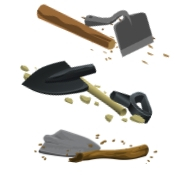| Equipment spending: repair or replace? |
 |
| Written by Christy Eull |
| Tuesday, April 23, 2019 03:00 AM |
|
As Phil Steinhauer, Designscapes Colorado, Centennial, points out, “money is going to spent one way or another....Businesses have to decide where they would rather spend it.” We have recently spent a great deal of time looking into the useful life of equipment and comparing repair costs to replacement costs,” explains Steinhauer. “We have found that most machines and vehicles reach a certain point in their life where the cost of repairing them outweighs the cost of replacing them. This year we are using our data to make better decisions on repairing or replacing across our entire fleet.” For companies that do not have the staff or resources to work on large equipment, repairs may only be an option for small equipment. Large items can only be replaced if staff do not have the tools or the skills to repair them. In order to save money on repairs, Ryan Spinharney, Ecoscape Environmental Design, Boulder, recommends checking with the manufacturer. “We will check to see if there are any recalls or warranty as well and send the equipment into a certified dealer or repair shop if need be.” Those in favor of replacing equipment often cited having equipment out-of-use as a factor that increases the costs. “Sometimes the down time costs more than the repairs,” says Tim Emick, Timberline Landscaping, Inc., Colorado Springs. For some, preventing the breakdown in the first place means not having to face the dilemma often. “Depends on the situation and the age of the equipment,” said Kent Kinsey, Misty Mountain Sprinkler Systems, Montrose. “Constant breakdowns cost a lot of downtime, but the cost of new equipment replacement…may not be affordable. A good maintenance program curtails a lot of breakdowns. If you treat your equipment right, inspect on a regular basis, and use high quality replacement parts and fluids you can keep things running for a long time.” Eric Schultz, Schultz Industries, Inc., Golden, has mechanics on staff to maintain and repair equipment. “We have however moved to a model of revolving equipment every 4-5 years, and it has just about eliminated repairs and downtime.” They’ve also needed fewer mechanics on staff as a result, which can be important in light of the current labor shortage. But for Marie Peacock, Gardenz, Lakewood it’s not easy to throw away a tool or piece of equipment. It’s about more than just money. “In my mind, repairing is much more sustainable, both environmentally and financially. There’s no sense in throwing something away just because it doesn’t work right anymore. Once it gets too old and too beyond repair, then I replace tools. But as long as I can repair them, I do.” Read more in this issue of Colorado Green NOW: |

 Colorado Green asked landscape professionals, “When equipment begins
Colorado Green asked landscape professionals, “When equipment begins 
